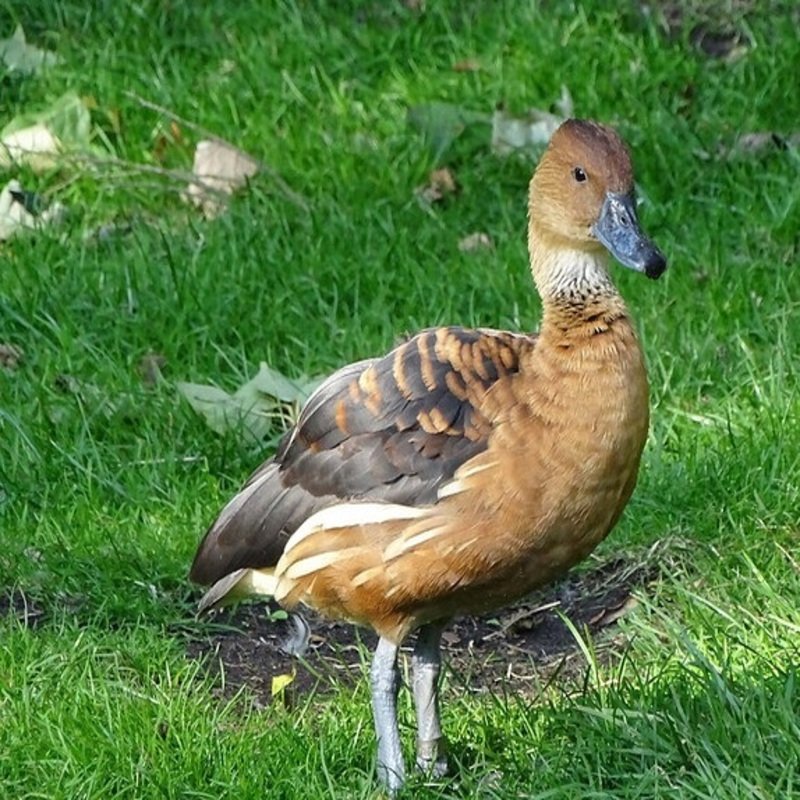The fulvous whistling duck or fulvous tree duck (Dendrocygna bicolor) breeds throughout the world’s tropical regions, including much of Mexico and South America, the West Indies, the southern United States, sub-Saharan Africa, and the Indian subcontinent.
Despite hunting, pesticide poisoning, and natural predation by animals, birds, and reptiles, the International Union for Conservation of Nature classifies this duck as least concerned+ due to its large population and extensive range.
Quick Overview: Dendrocygna Bicolor – Fulvous Whistling-Duck
Body size: Around 18-21 in (46-53 cm) and a weight of 726 g (25.6 oz)
Main colors: Brown, White, Gray, Blue-Gray
Range: Eastern United States
Migratory Bird: Yes
Best time of the year to see in the U.S.: March, April, May, September, October, November
Conservation Status: Least Concern
Fulvous Whistling Duck Description
Long-legged, golden brown with a darker back and a blackish line running down the back of its neck. Their flanks are striped with white, their legs are gray, and their bills are long and bluish-gray.

Size
These birds have a length of 18-21 in (46-53 cm) and a weight of 726 g (25.6 oz). Their wings could range from 36 in (91 cm).
Feeding
Generally, the fulvous whistling duck feeds at night. It forages for discarded grain in cornfields and rice fields, gleaning seeds from grasses and weeds. Occasionally, it will suck up plant debris in shallow water.
Habitat
Marshlands, wet meadows, rice fields, flooded agricultural regions, and lagoons are all habitats for the fulvous whistling duck.
Behavior
As is the case with geese and swans, both sexes of whistling ducks have fairly similar plumage. They have a single molt (in contrast to the “real ducks,” which have two); both parents share in brooding the young, and pairs mate for life.
Dendrocygna Bicolor Scientific Classification
- Kingdom: Animalia
- Phylum: Chordata
- Subphylum: Chelicerata
- Class: Aves
- Order: Anseriformes
- Family: Anatidae
- Genus: Dendrogcygna
- Species: Dendrogcygna bicolor
Other common names
Also, known as the Fulvous Tree Duck.
Best time of the year to see
In the United States, the best time of year to see these birds are during the Spring season (March-May) and during the Autumn season (September – November).
Distribution of the Fulvous Whistling Duck in the USA
The Pacific Coast of Mexico, the Gulf Coast from Texas to Mexico, Florida, and the West Indies are all home to resident species. Additionally, this species breeds in Texas and Louisiana. The western population is dwindling.
The Fulvous Whistling-Duck can be found in the following states in the United States – Alabama, Arkansas, Georgia, Oklahoma, Mississippi, North Carolina, and South Carolina.
